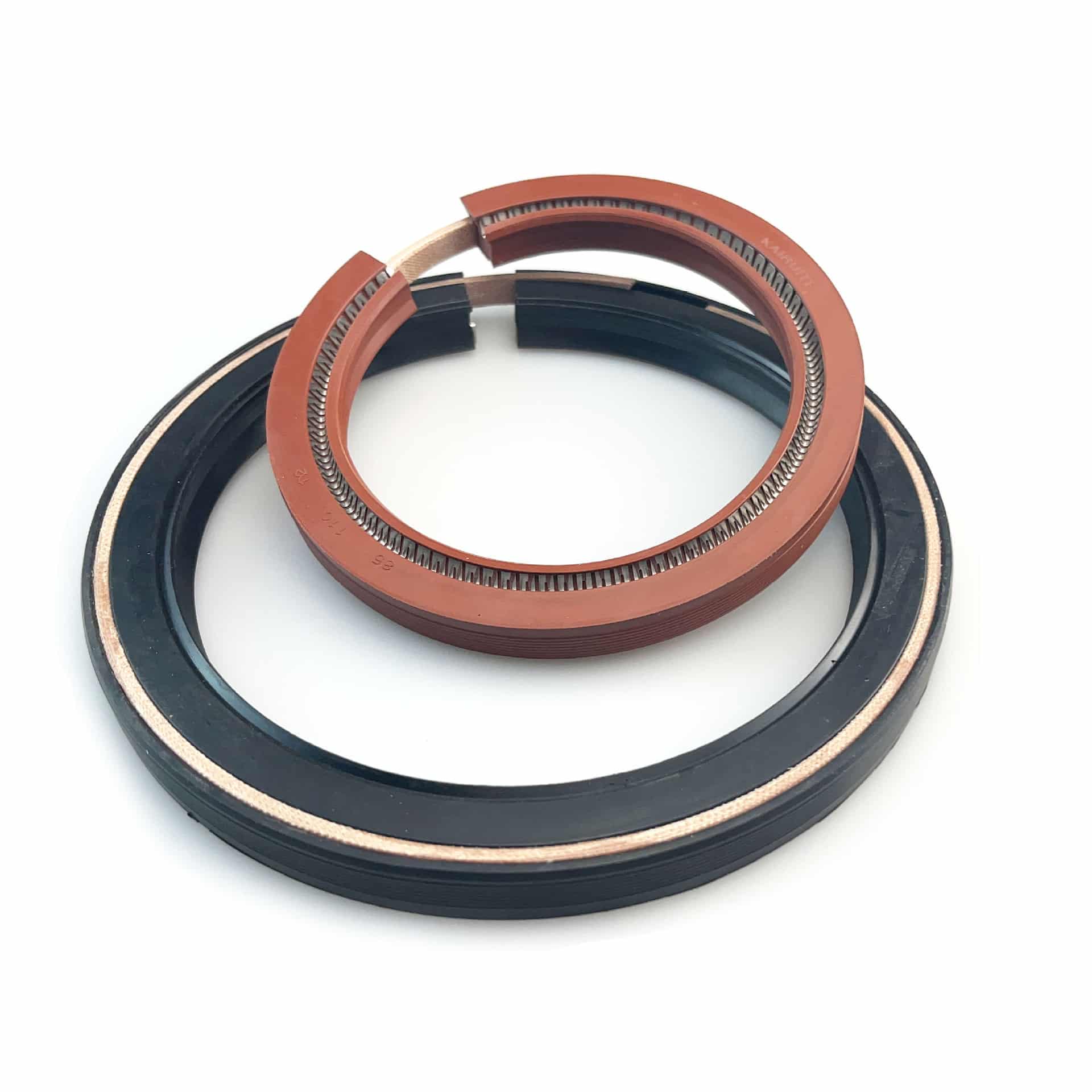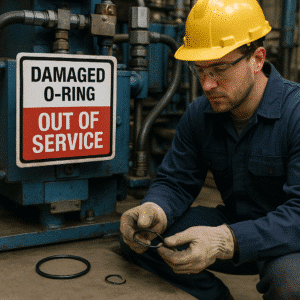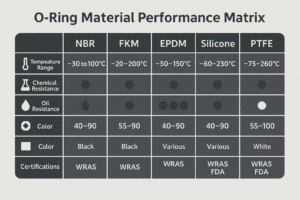Choosing the wrong oil seal size can cause costly downtime and oil leaks. I’ve helped dozens of engineers and buyers fix seal mismatches—and it always comes down to getting the size right.
The right seal size ensures optimal shaft protection, zero leakage, and a longer service life. In this guide, I’ll show you how to pick the correct oil seal by inner diameter (ID), outer diameter (OD), and thickness.

What are the standard oil seal size parameters?
Oil seals are sized using three main measurements: ID (inner diameter), OD (outer diameter), and Width. These values define how the seal fits the shaft and housing.
| Parameter | Hvad det betyder | Sådan måles |
|---|---|---|
| ID | Skaftpasning størrelse | Measure shaft or inside of the seal |
| OD | Bore/housing fit size | Measure housing or outer ring of the seal |
| Bredde | Seal thickness | Use a caliper on the cross-section |
If you’re not sure where to start, check out our Oil Seal Basics Guide for more background.
How do I choose oil seals by size?
What size oil seal do I need for my machinery?
This depends on your machine’s shaft diameter, housing bore, and groove depth. Here's what I recommend:
- Use a caliper to measure shaft (ID), bore (OD), and seal height (Width)
- Use both metric (mm) and inch if you're working with international parts
- Match to standard codes (e.g., TC 30x47x7)
How to read standard oil seal part numbers?
Many seals use the format TC 30x47x7, where:
- TC = dobbeltlæbe med fjeder
- 30 = shaft size in mm
- 47 = bore size
- 7 = bredde
This format makes it easy to order replacements.
If you're unsure, check our TC Oil Seal Guide for full breakdown.
Metric vs Inch sizing: What’s the difference?
Some industries use mm, others use inches.
- Metrisk: 25x40x7 mm
- tomme: 1.000" x 1.500" x 0.250"
Need to convert? Try our Size Conversion Tool.
How to match the right oil seal to your application?
Different machinery types require different fits and materials.
| Industry Use | Fælles skaftstørrelse | Best Seal Type | Material Suggestion |
|---|---|---|---|
| Hydrauliske pumper | 20–80 mm | TC / SC | NBR / FKM |
| Crankshafts | 30–100 mm | Snæver tolerance | FKM / Silicone |
| Small Motors | 12–50 mm | Interference fit | NBR |
If you’re sourcing large volumes, we support OEM-size customization uden MOQ.
What if the seal is damaged or missing?
Even without markings, you can still measure:
- Shaft (ID)
- Housing bore (OD)
- Seal groove (Width)
Use a digital caliper and take a photo beside a ruler. Our team will help you match it.
We’ve created accurate matches from just these 3 numbers. Don’t risk guessing.
Check this installation guide to ensure your new seal fits right.
Can I use a seal with slightly different dimensions?
Technically, small differences might seem minor—but even 0.5 mm off can cause:
- Olielækage
- Shaft friction
- Installation failure
Always confirm the exact size. If needed, custom seals are available in days.
Konklusion
Choosing the right oil seal size means measuring precisely, reading codes correctly, and selecting seals by both size and material. Don’t let a 1 mm error ruin your operation.
Let's match your seal today
Still unsure which size fits? Just send us the shaft diameter or old seal photo.
- E-mail: [email protected]
- WhatsApp: +86 17622979498
We’ll identify and quote the right seal—fast.
Related topic
How to Identify Oil Seal by Part Number
TC vs TB Oil Seal Differences
Oil Seal Cross-Reference Chart


